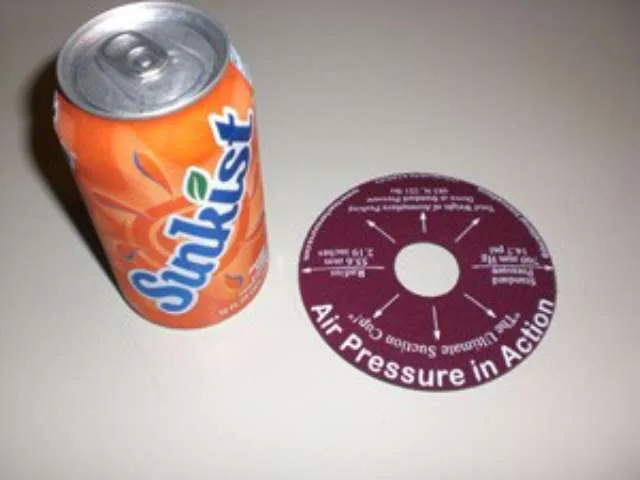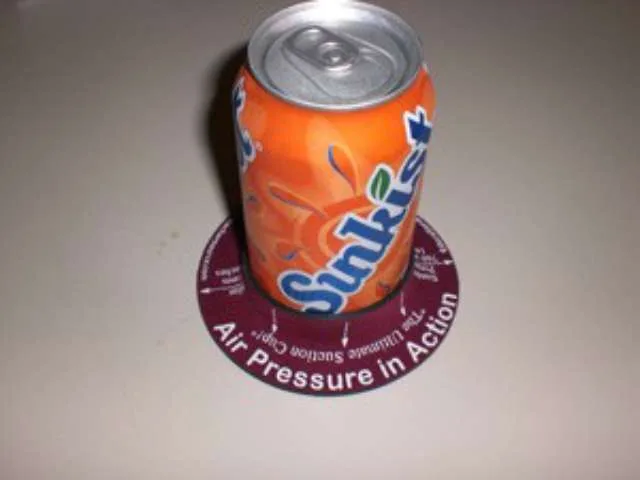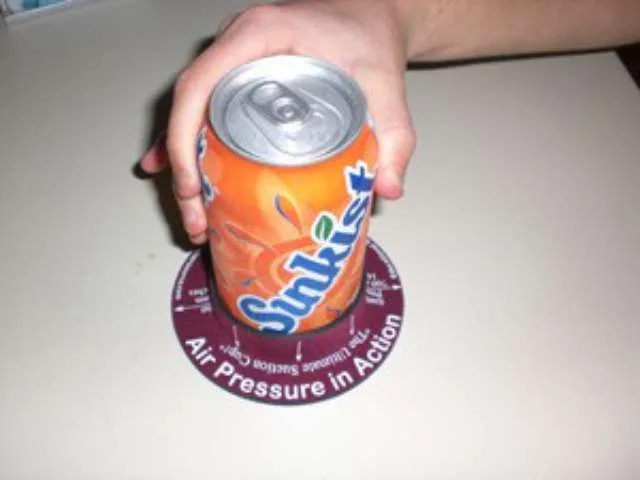
It’s enough to crush you! The entire atmosphere is sitting on your shoulders right now. Yet, you don’t even notice.
Before you start feeling like Atlas, remember, even the tiniest baby can also carry the weight of the atmosphere with no strain at all.
So just how heavy is the air? And how is it we can withstand all that weight?
You may remember from school that air weighs in at 14.7 pounds per square inch. Have you ever really thought about that?
That means my kitchen table, which is 4′ x 5′ (or 48″x60″) has a surface area of 2,880 square inches. Multiply 2,880 by 14.7 and that means the column of air above my table weighs in at an amazing 42,336 pounds. Yikes! That’s about half the weight of a loaded tractor trailer – sitting on my table.
Air pressure, fortunately, pushes in all directions. That means there’s just as much pressure pushing up on the table from below as there is pushing down on the table from above.
Here’s a quick demonstration of how strong air pressure can be:

Using an ordinary soda can and this cool little air pressure demonstrator, available at Teachers Source, we get a pretty good idea of what happens. When we put “The Ultimate Suction Cup” (which is made of wetsuit type material) over the soda can it forms a tight seal.

Put the can on a flat surface allowing the “suction cup” to come in contact with the surface. Then, simply try to pick the can straight up.

My daughter just about lifted the counter top off of the cabinet before being able to break the can and “suction cup” free from the counter.
Here’s the math:
The “suction cup” has a radius of 2.19 inches, giving us a total surface area of 15.067 square inches (pi times the radius squared). Multiply the surface area of 15.067 square inches by 14.7 pound per square inch and you have 221 pounds of pressure on that little ring. No wonder it can’t be picked up!
Of course, if you just break the seal, it comes loose very easily because you area allowing the pressure to immediately equalize on all sides of the “suction cup.”
Our Bodies
Our bodies are not sealed; we have lots of openings for air to freely move in and out. That gives the air pressure a chance to equalize, thereby keeping our bodies from being crushed under the weight of the atmosphere.
Change in air pressure is often blamed for aches and pains in our bodies. So far, science hasn’t been able to prove a link between the two. We’ll discuss that in-depth in a future article!
Final Thought
I remember making a lengthy road trip through the mountains of Mexico several years ago. Among the snacks we took with us from our near-sea-level home in South Texas was a can of Pringles. I don’t remember what altitude we were driving through when we heard a loud pop from the back seat. The can of Pringles had “exploded.” As we go higher into the atmosphere, we get above a great deal of the air.
The higher we go, the less air pressure is being exerted on us and everything around us. At an altitude of about 5,000 feet, for example, roughly 15% of the atmosphere is below us. So, the weight of the air is closer to 12.5 pounds per square inch.
My Pringles can was sealed tightly. When the air pressure decreased outside because of our elevation, the higher pressure inside the can tried to escape and the top of the can blew off. I think there are still Pringles crumbs in the back seat of that car.



